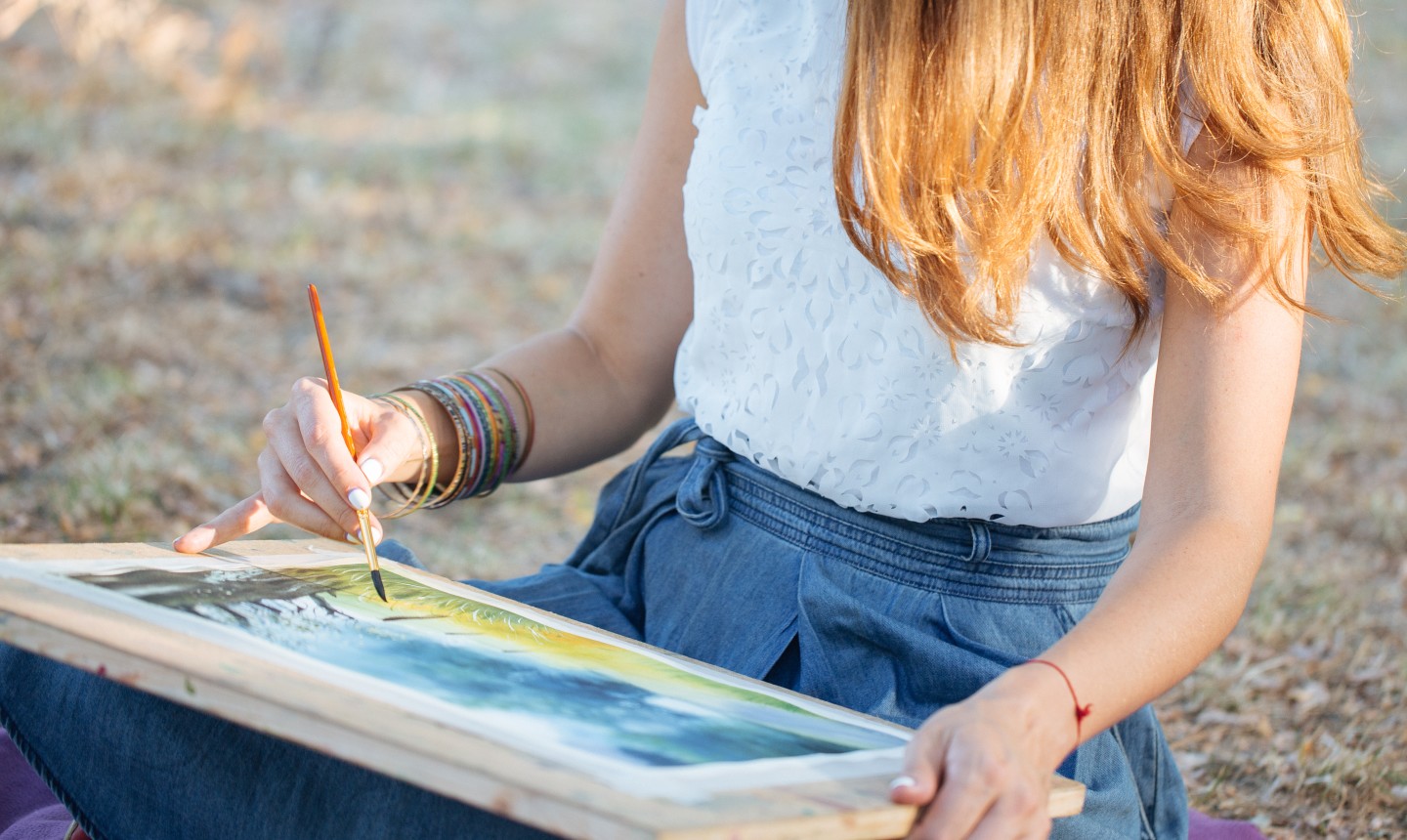
The more landscapes I paint, the more I understand the importance of painting outdoors, directly at the source of my inspiration. When I work outdoors (en plein air), I’m painting not just what I see, but also what I feel of the elements around me. I’m inspired to capture the weather, the light, the details of that specific place in that specific time.
And I’ve found that it actually doesn’t matter if I finish an entire painting in my outdoor session. What matters is the experience of spending time there, taking in my surroundings with all five senses.
It’s hard to sum up all we can learn from outdoor painting in a quick list — the lessons are endless! But here are a few key artist’s skills that are best built in the out of doors:
1. Attention to Atmosphere
Experiencing the landscape first-hand teaches us a lot about nuance and atmosphere. We notice the way light can shift within seconds; the way clouds are random and never look the same twice; the way a sky is not always blue, but takes its color from a million hues all over the spectrum.
And we pick up inspiration from our other senses too. Oppressively hot and humid weather can be portrayed with a heavier hand quite naturally, when our limbs are slow moving and paint is slow to dry. A brisk winter day causes us to paint more swiftly, as our paint will dry in seconds — so a light, quick energy comes into our work. A quiet, misty morning might inspire lots of dreamy washes.
2. Keen Observation
When I’m outdoors, immersed in my subject, I find my powers of observation are at their peak. I can really see where the sun is giving highlights, and where the darkest shadows lie. These highlights and shadows are much more clear in person than when working from a lifeless photograph.
With landscapes, I tend to squint my eyes and flatten the scene that surrounds me. This helps me to see, in 3D, the basic shapes, values and color, which is always a good place to begin. Try to identify a focal point (the place that draws your eye the most), and allow your scene to become increasingly blurred as your eye moves away from this point.
3. Thoughtful Composition
This can be the hardest thing to learn: what part of the landscape should I include in my painting, and what should I leave out? It really comes down to what captures your eye.
If it’s a remarkable sky, I’ll make at least two-thirds of my composition sky, to really explore its beauty and make it the focal point. If the sky is unremarkable, the land takes center stage. Perhaps there’s a shrub directly in the center of the view I’ve selected. Is it interesting enough to make a focal point? Or should I just leave it out?
Often, I take a small piece of cardboard with a rectangle cut out in the center. I use this as a viewfinder to narrow my focus, moving it around the landscape until I arrive at something that feels pleasing to my eye. (When we only have a photograph for reference, we can’t choose from this 360-degree view!)
4. Spontaneity
Another thing that has really helped my paintings is the urgency I feel when painting outdoors. The light can change in a matter of minutes, and the clouds I was so involved with can completely disappear at a moment’s notice.
When I work faster to avoid missing the details that I want to capture, I find that my paintings have a more spontaneous and energetic quality that’s hard to recreate from a photograph. Hurrying to lay down the big shapes and areas of color and light can lead to more interesting paintings, filled with movement and expression.
5. Better Painting in the Studio, Too!
The lessons of painting en plein air don’t end when you go inside. Even though I rarely (if ever) finish a painting outdoors, I come back with a heightened sense of what I want to capture, and detailed notes on what I want to add or enhance as the piece evolves. I find it’s especially helpful to bring notes on the light, wind and weather, so I can be true to what I experienced, even after the fact.

Share tips, start a discussion or ask one of our experts or other students a question.
Already a member? Sign in
No Responses to “Why Every Painter Should Head Outdoors”